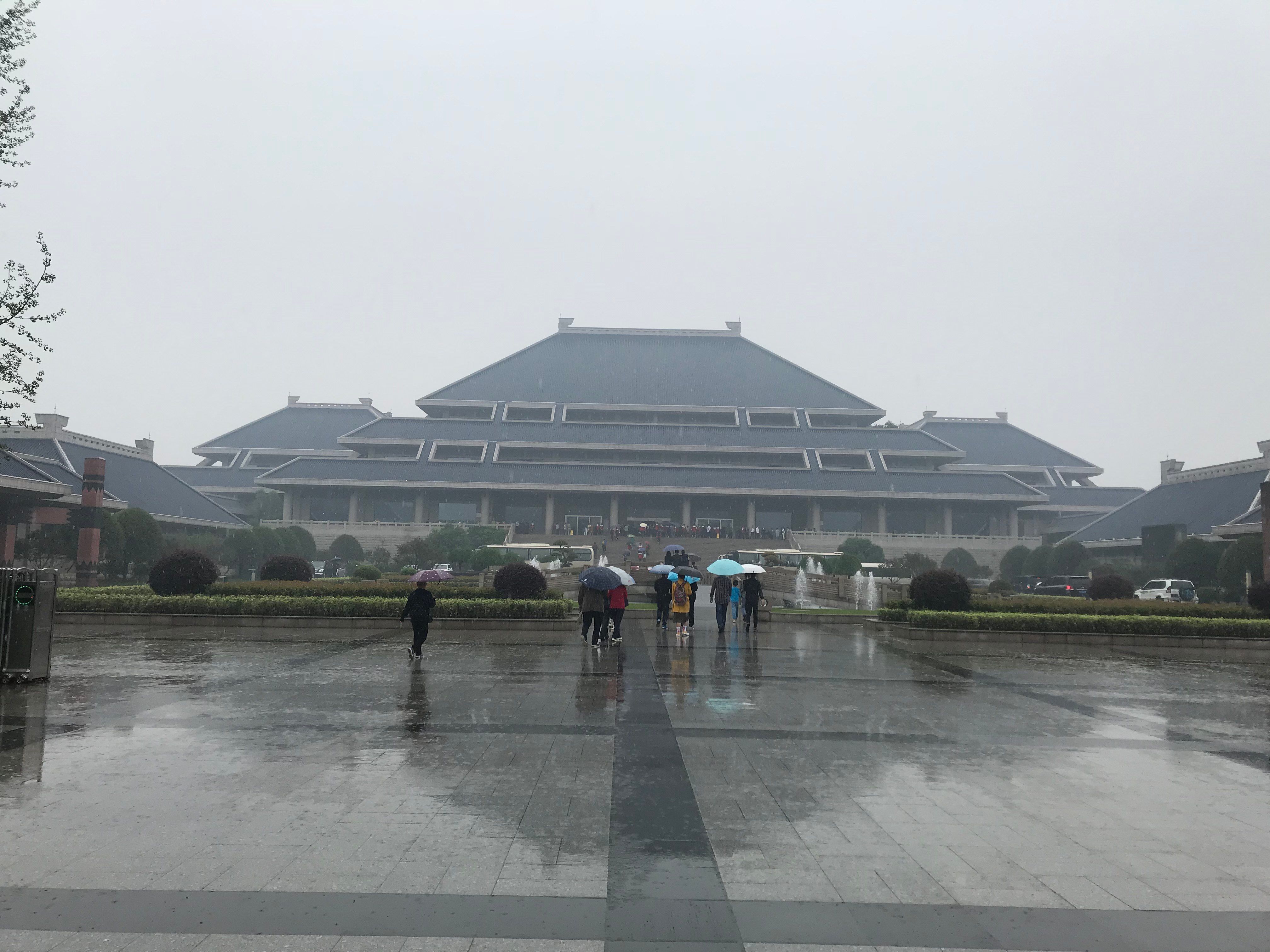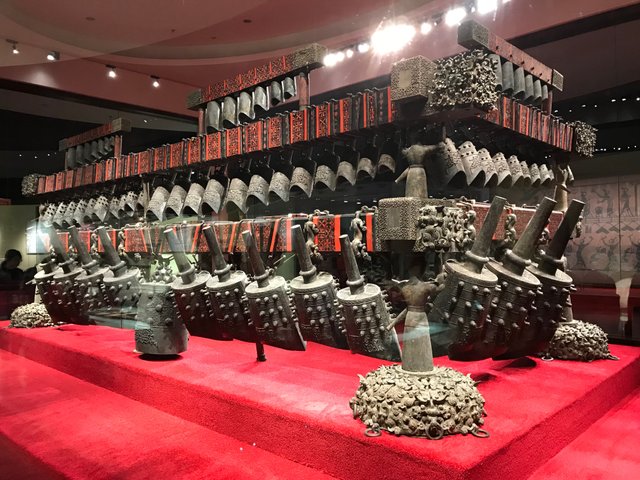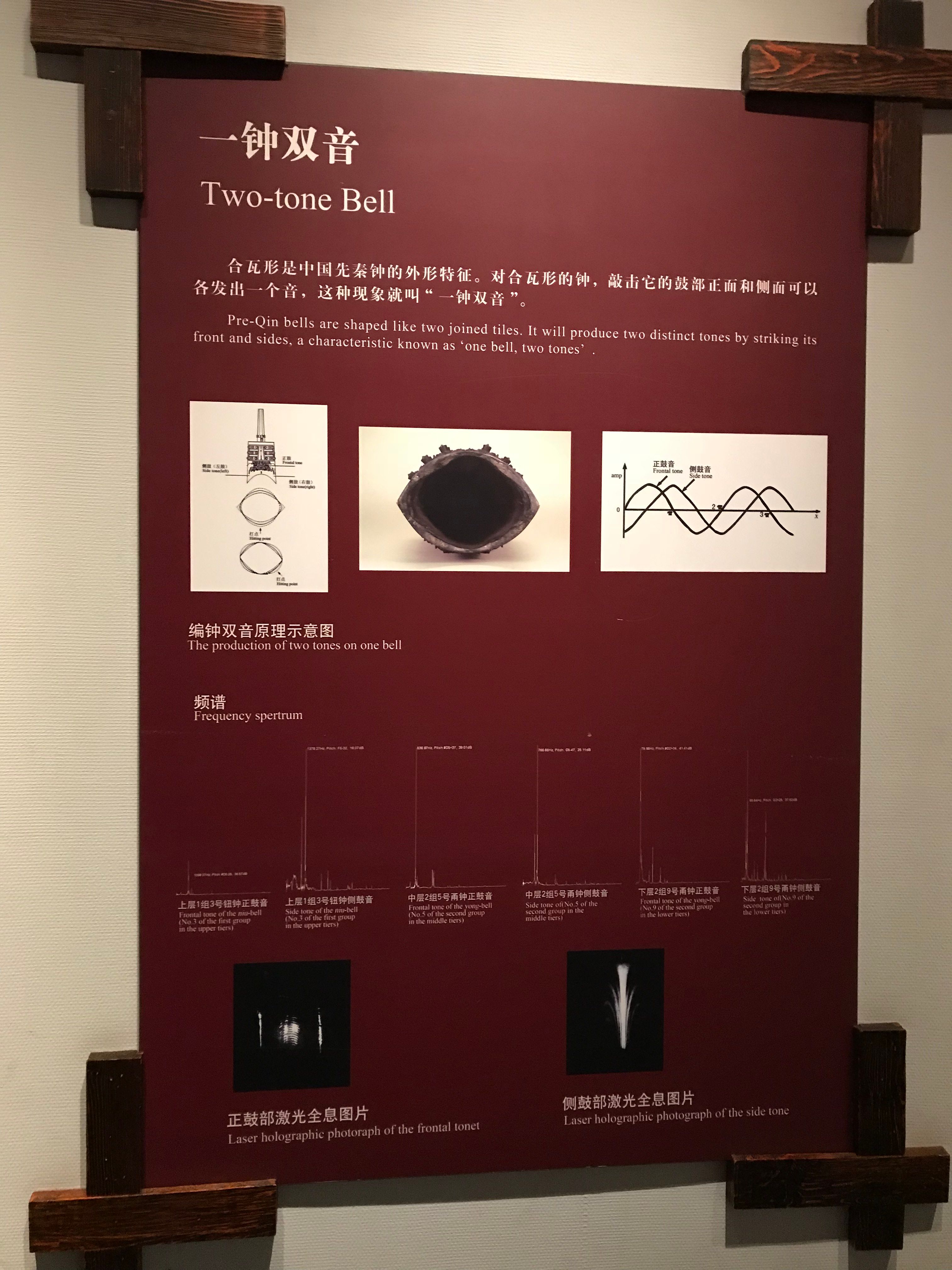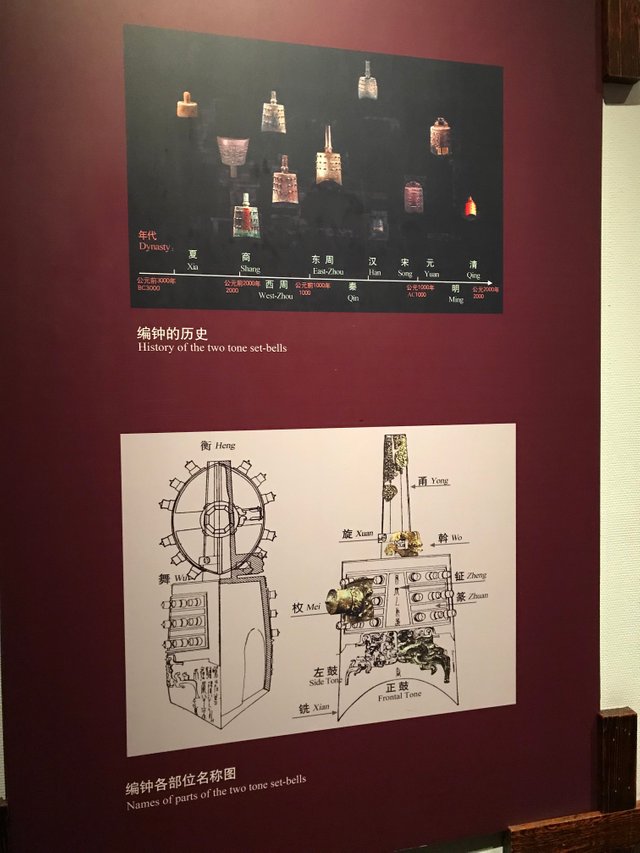Bianzhong of Marquis Yi of Zeng
I finally have time to visit Hubei Provincial Museum, which is one of the best known museums in China, with a large collection of state-level historical and cultural relics.

It was a rainy day, but inside the museum there’re still full of visitors. The museum hosted 2 million visitors in 2017, that’s a huge number even in China.

The Bianzhong (bells)
The museum’s collection includes several archaeological items which are on a short list of Chinese cultural relics forbidden by central government to exhibit abroad. Among those, Bianzhong of Marquis Yi of Zeng (曾侯乙编钟), which was built around 433 BC (2451 years ago), is one of most famous archaeology discoveries in China. Bianzhong is a set of bells arranged on wooden frames to perform music. Similar Bianzhong found in China usually contains 10-20 Individual bells, the one found in the tomb of Marquis Yi of Zeng has a whole set of 65 bronze bells.

The bell can make two distinct sounds by striking front and sides, known as “one bell, two tones”.

China has a long history of using Bianzhong as music instruments on ritual and court. Its neighbors also imported Bianzhong. It’s called “pyeonjong” in Korea, “biên chung” in Vietnam and “henshō” in Japan.
Now you may ask: can it still be used to perform? Yes! Thanks to be discovered in nearly perfect state, it’s still playable. But because it’s so valuable, it’s performed only three times since the discovery. First time is a trial after discovery, the second time is for People’s Republic of China’s 35 year’s anniversary. The third time is to celebrate Hong Kong’s return in 1997. But, you can search on YouTube to find many performances by its duplicates.
I would like to write more about other collections in the museum. If you like this one, please up vote.
This post has received a 22.65 % upvote from @boomerang.